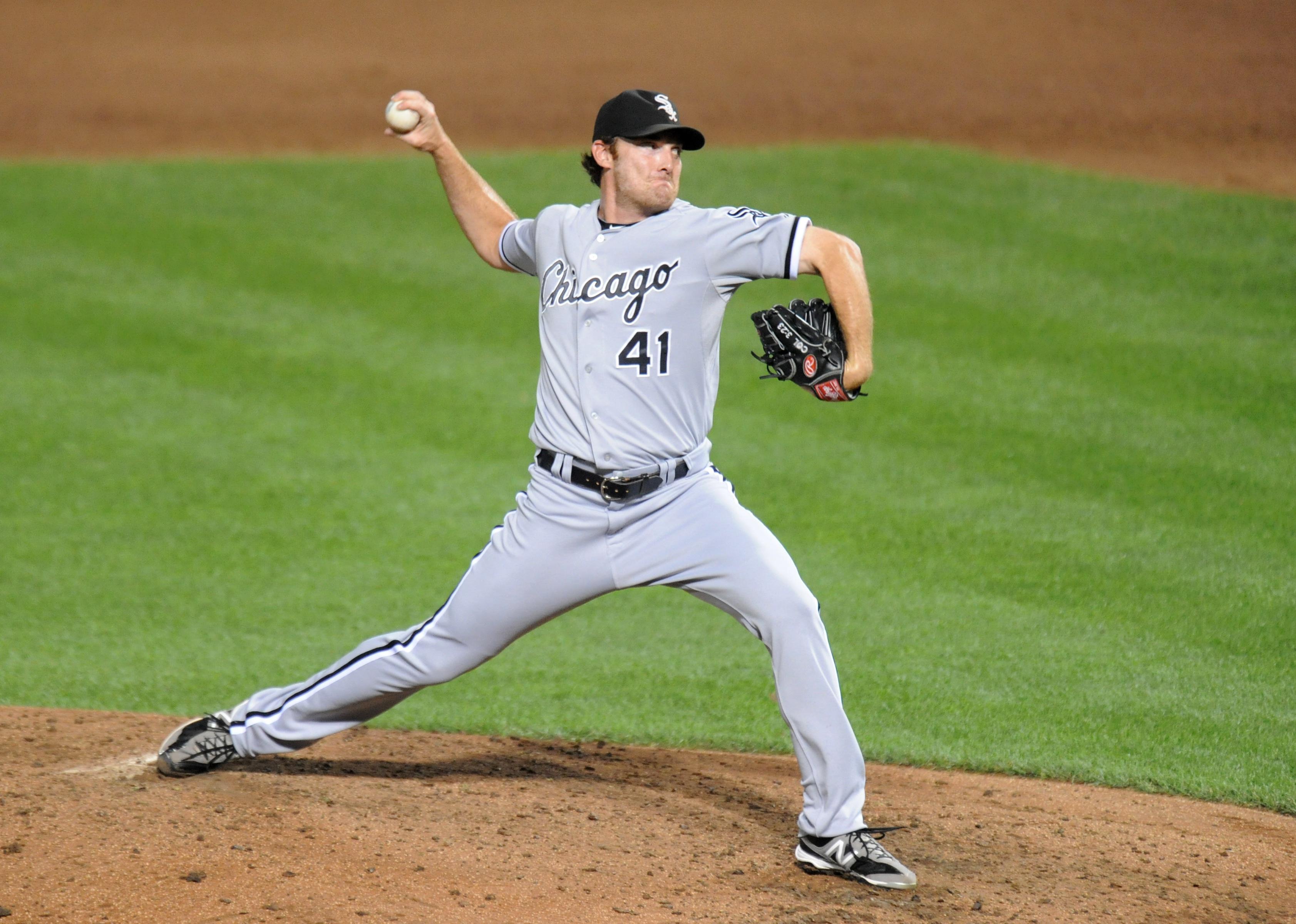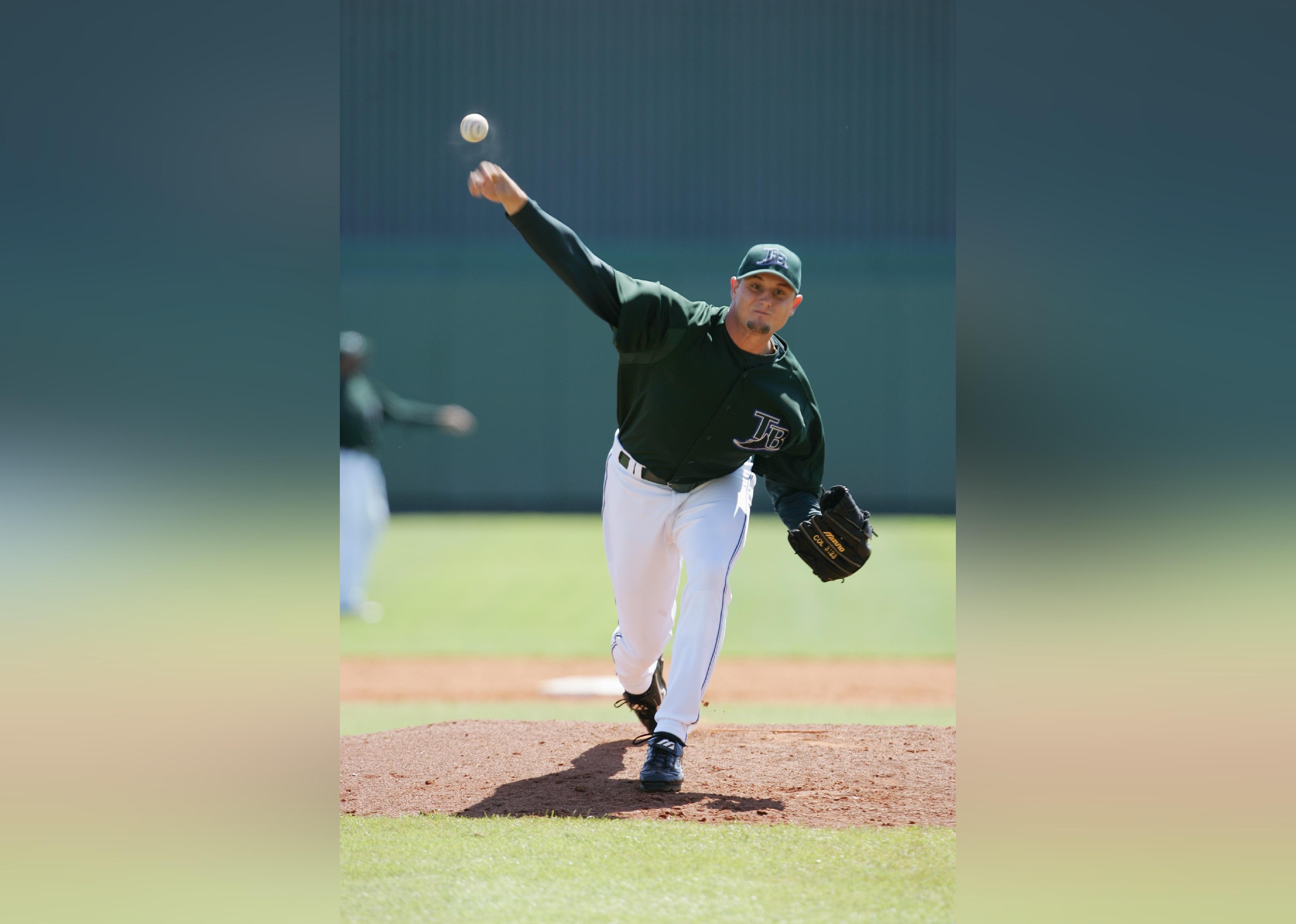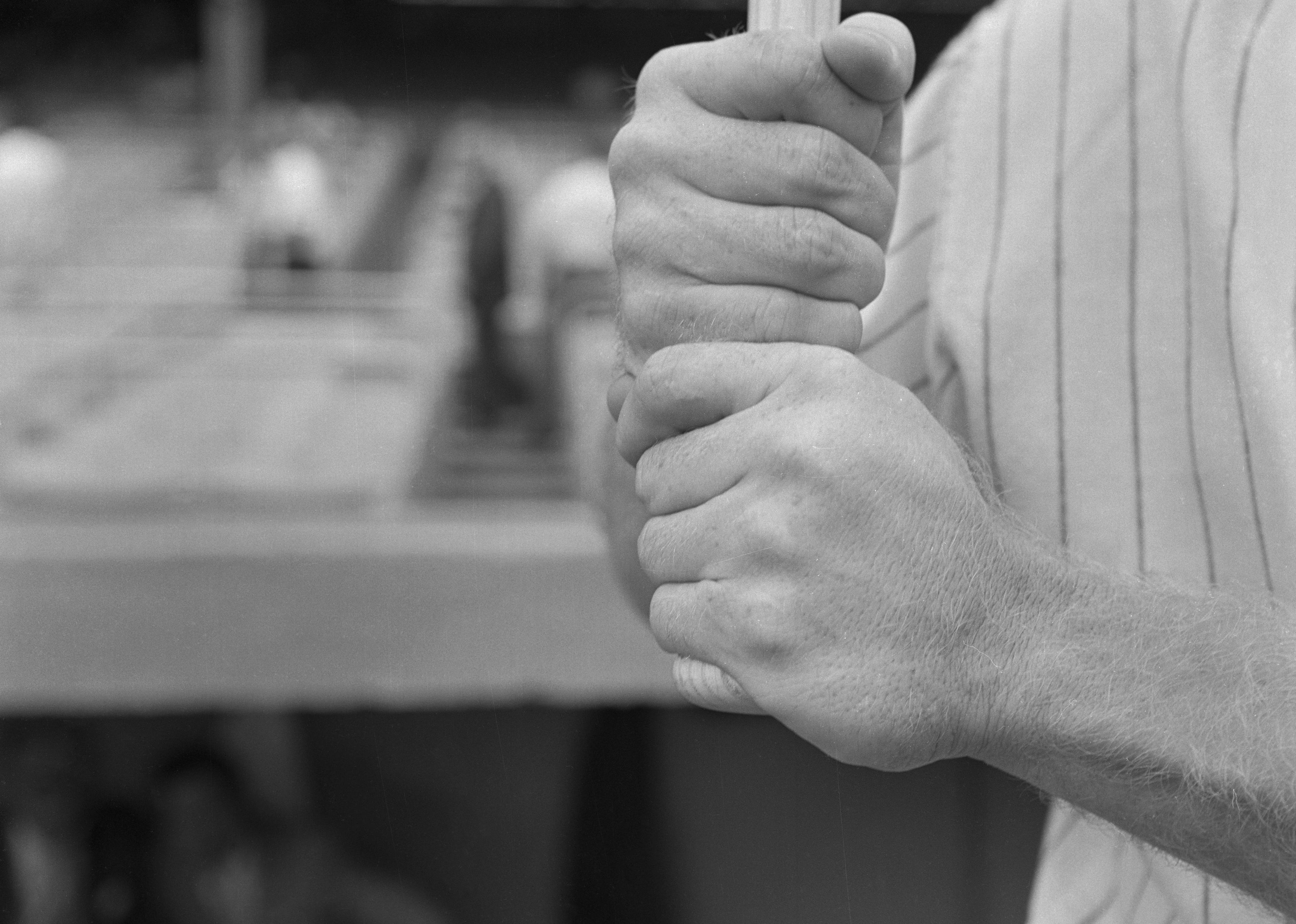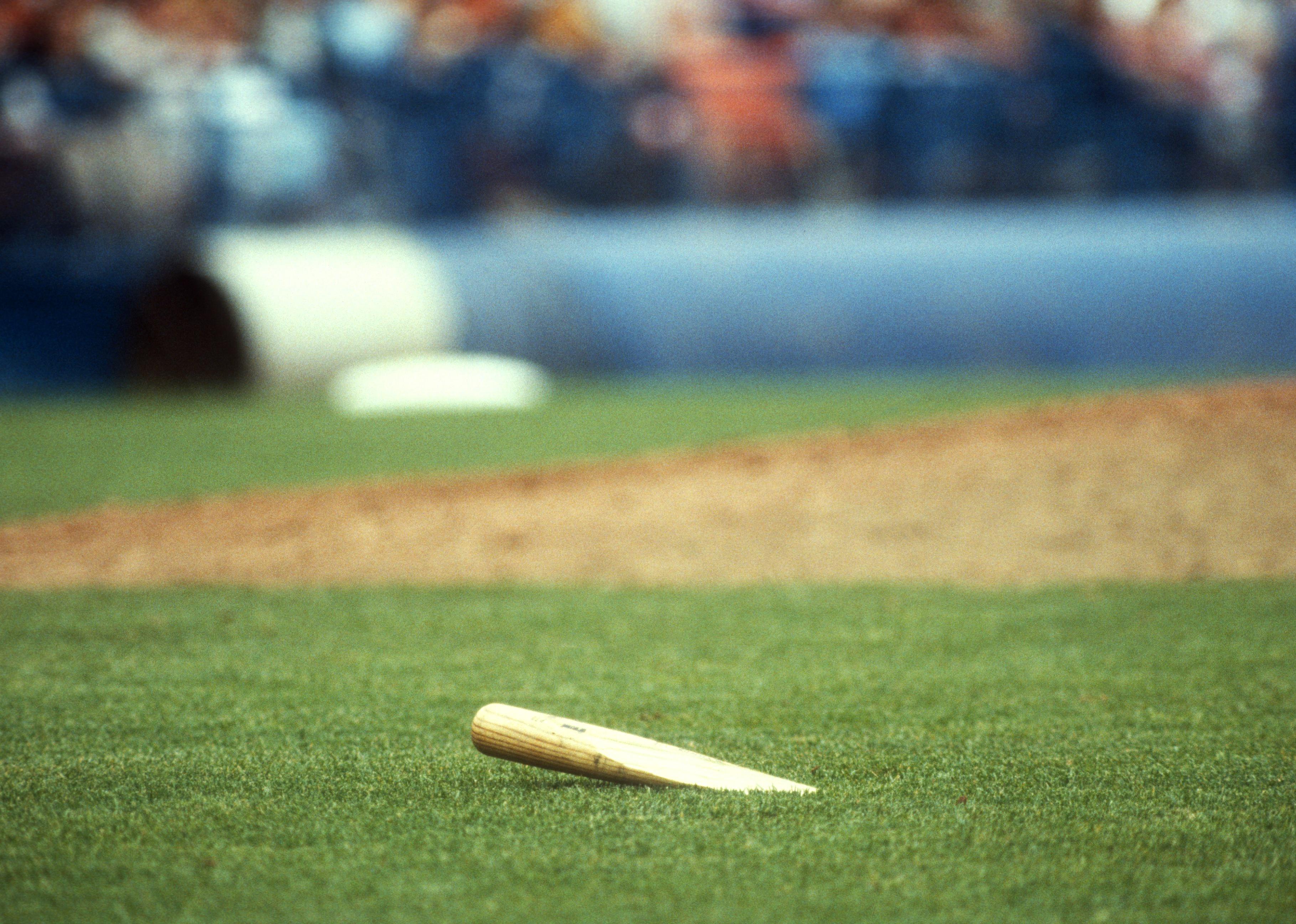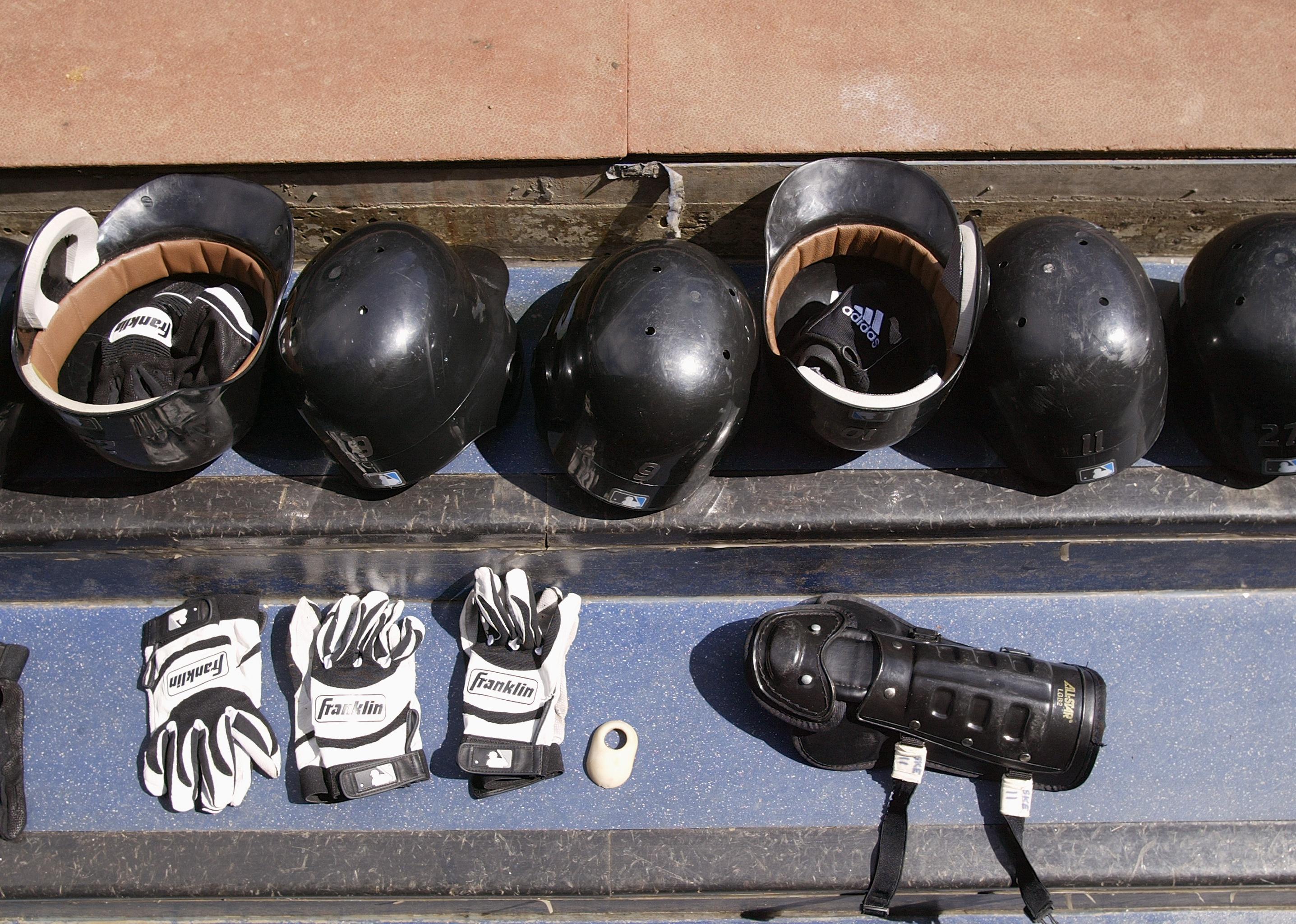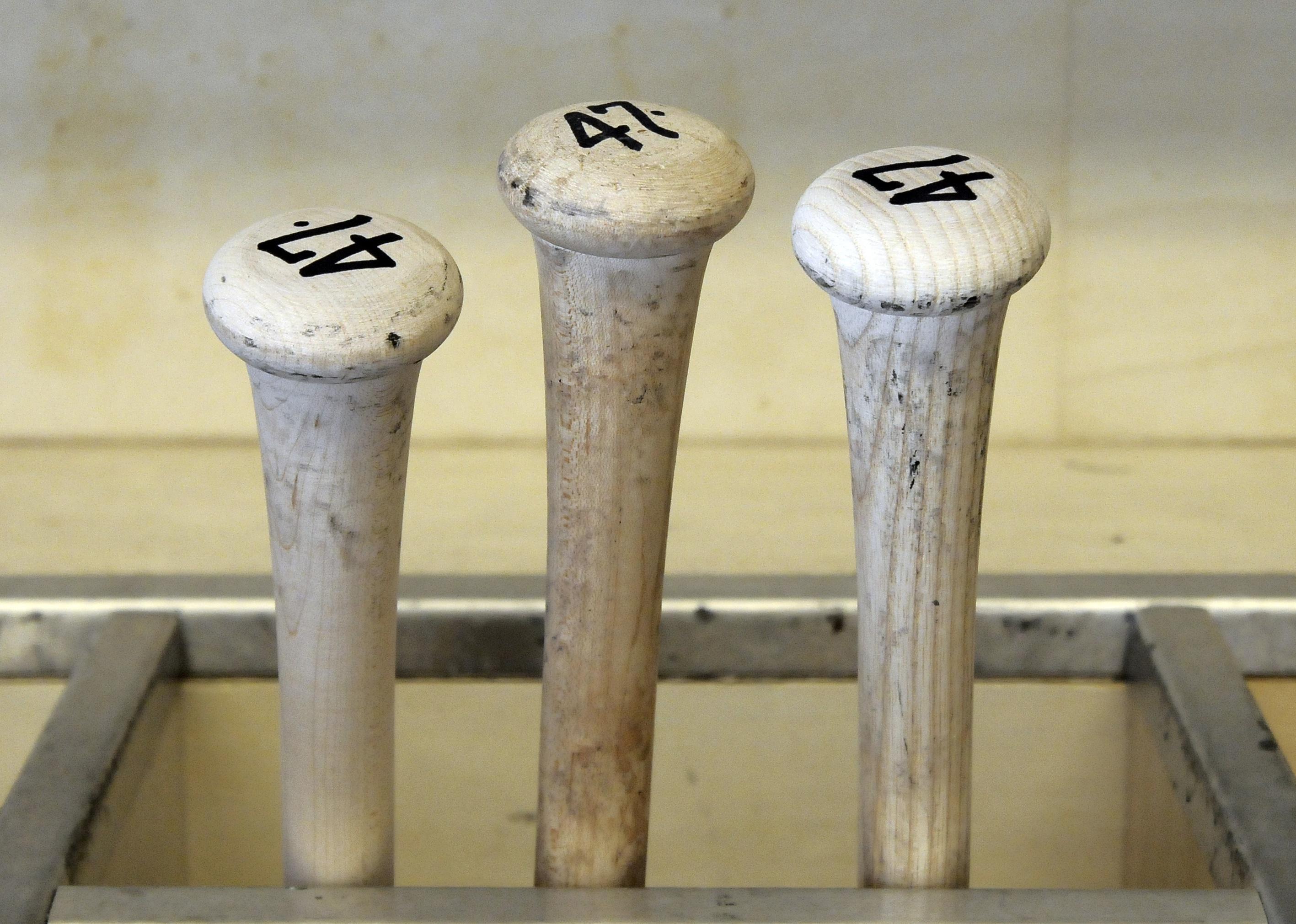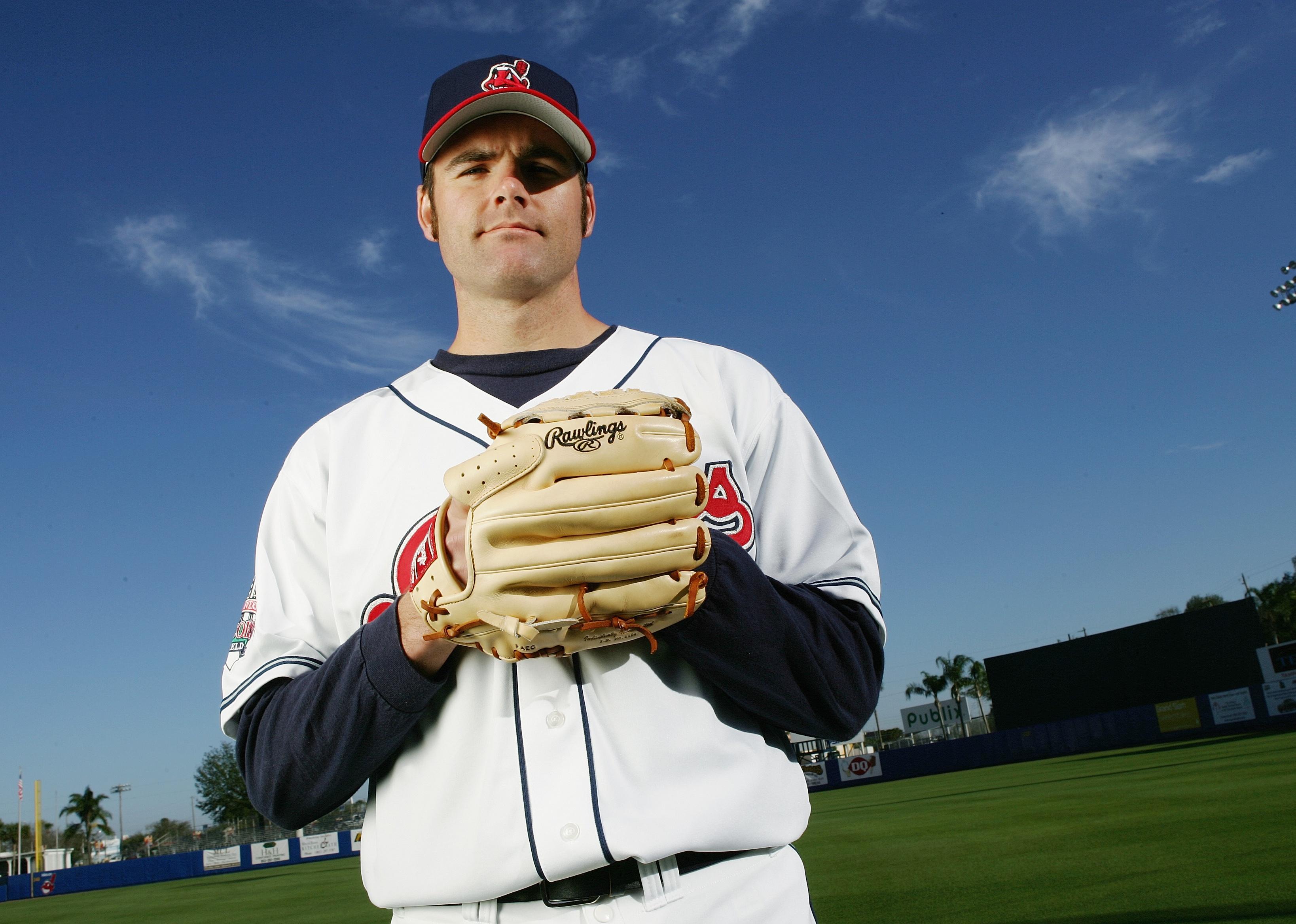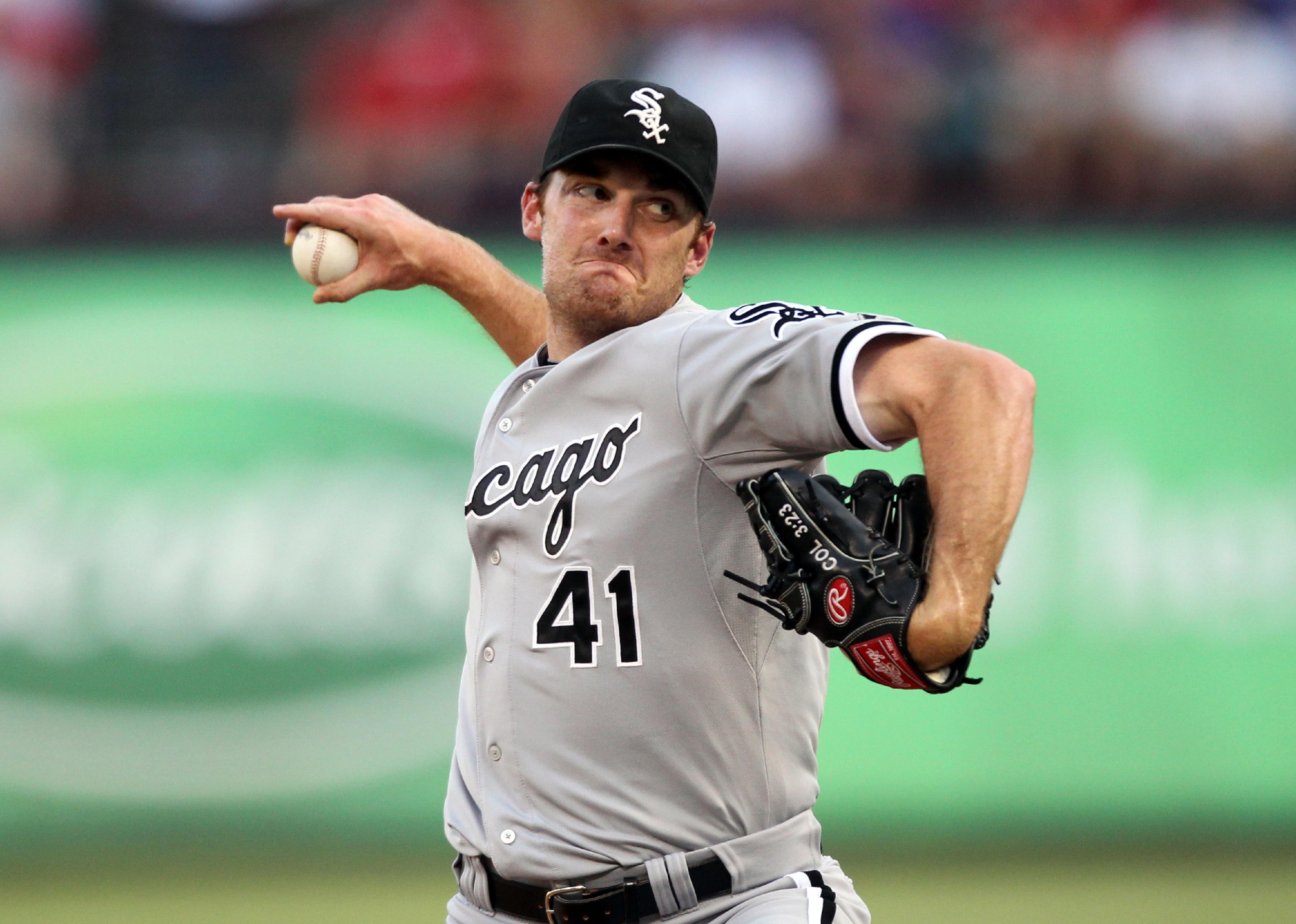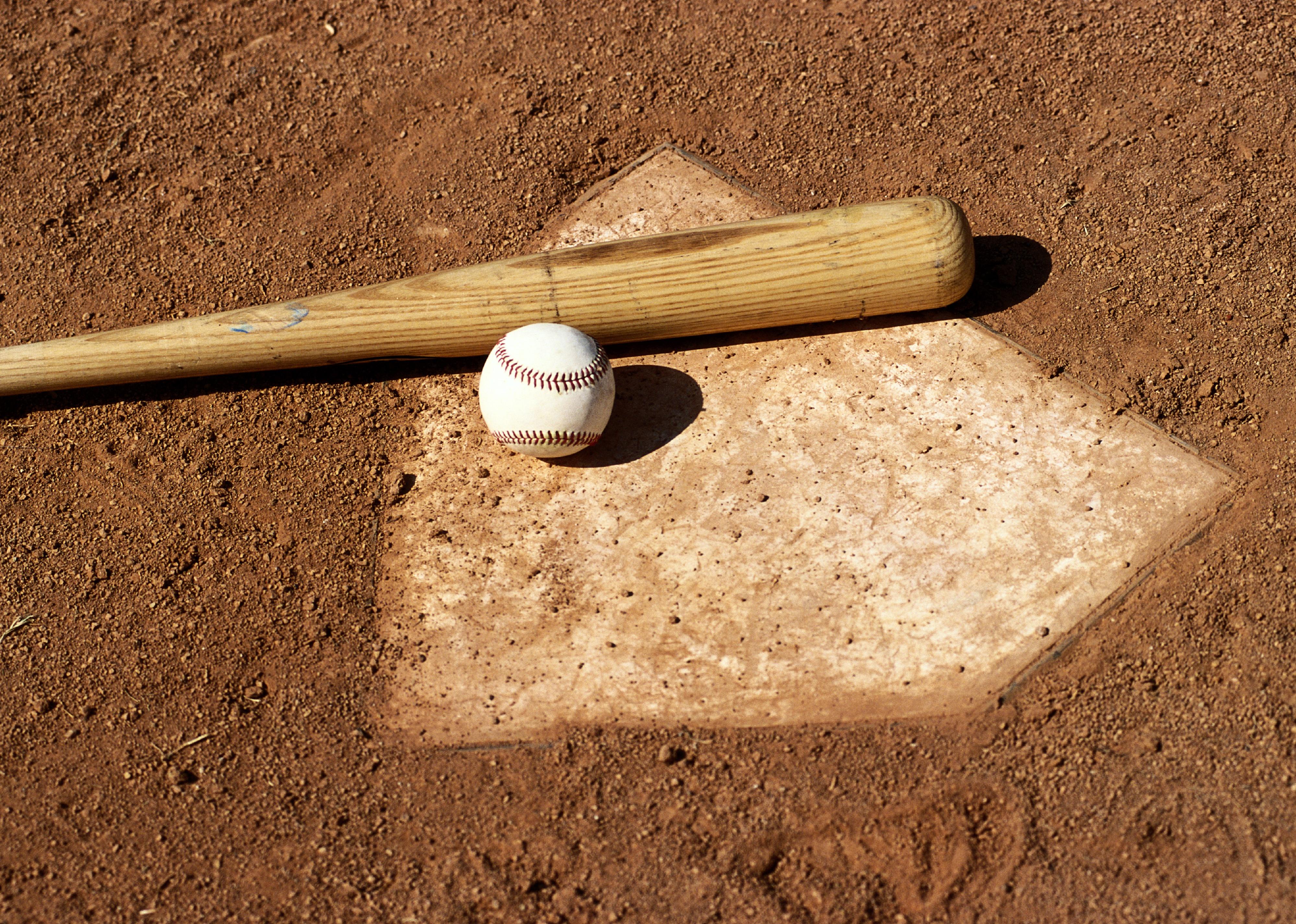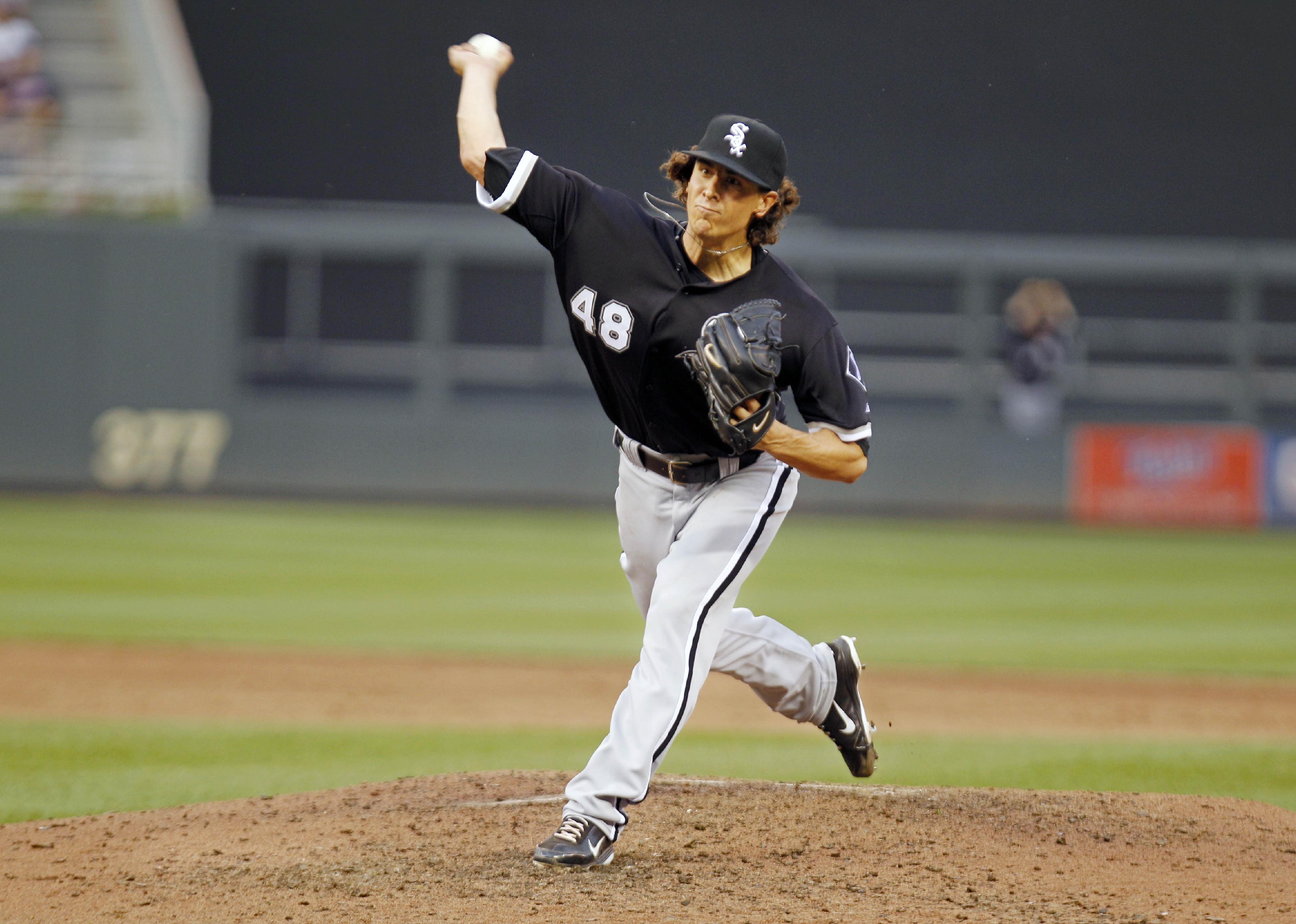10 most unexpected MLB pitching performances
Mitchell Layton // Getty Images
10 most unexpected MLB pitching performances
Philip Humber #41 of the Chicago White Sox pitches during a baseball game.
The beauty of sport is the unexpected. The oddity. The shock. The awe.
If you remove the unexpected from sport, you lose the drama. Sport would become boring, an exercise in stale storytelling. Baseball is no outlier in this regard.
While often criticized for its mundanities—games last three-plus hours when little of consequence happens, teams play 162 games per season, etc.—baseball has its share of wild moments. These sparks of excitement are events that send tremors of giddy joy into sports fans, whirling them far from the mundane.
Think Trea Turner’s grand slam at this year’s World Baseball Classic. Bill Buckner’s error in the 1986 World Series. Or Bobby Thomson’s “shot heard round the world” to clinch the 1951 National League pennant. No one could’ve predicted any of those before they happened. And, in hindsight, it makes little sense that they did happen.
Stacker wanted to analyze and grade such moments in baseball. We settled on finding the most unlikely pitching performances—great games by otherwise lackluster players—by delving into the data tomes of Baseball-Reference.com.
For this exploration, we only considered MLB pitching outings since 1969 (the start of the Divisional Era) and used a pitching-focused metric called game score. Developed by Bill James, game score rates starting pitchers on a variety of stats, including innings pitched, strikeouts, and hits allowed. Most game scores fall between 0 and 100, with 50 being average and higher being better.
To determine “unexpected performances,” only pitchers who achieved a single great game in their career were included in this analysis (a game score of 80 or higher being counted as “great”). The average game score of a player’s career was then subtracted from their best performance. Those with the largest differences between their career average and best performance were ranked higher on this list. All pitchers on this list gave up 0 earned runs in their best performance.
Read on to see which 10 performances made the cut as baseball’s most unexpected.
![]()
Doug Pensinger // Getty Images
#10. Doug Waechter, Tampa Bay Devil Rays
Doug Waechter of the Tampa Bay Devil Rays pitches en route to defeating the Pittsburgh Pirates.
– Date: September 3, 2003
– Result: Tampa Bay 7, Seattle 0
– Pitching line: 9 innings pitched, 2 hits allowed, 2 walks, 7 strikeouts
– Game score: 88
– Career game score average: 43.2
– Difference: 44.8
Born and raised in St. Petersburg—the home city of the then-called Devil Rays—Doug Waechter attended Tampa Bay’s inaugural game as a teenager in 1998. A year later, the franchise drafted him and this game marked his first-ever big league start.
With the hometown connection, this game was extra special. According to the Tampa Tribune, Waechter was the first player from the local Pinellas County to appear for the Rays. Waechter’s shutout gem also took place on the birthday of his mother, who watched the game in the upper deck alongside numerous friends and family.
However, the rest of Waechter’s career was less special. He spent the next three seasons journeying back and forth between the minors and the majors for Tampa Bay, and a shoulder injury in 2006 prevented him from becoming a major league regular. Waechter later did stints with the Florida Marlins and the Kansas City Royals before making his final major league appearance in 2009.
Bettmann // Getty Images
#9. Ken Reynolds, Philadelphia Phillies
Black and white photo of a man gripping a baseball bat.
– Date: May 30, 1971
– Result: Los Angeles Dodgers 2, Philadelphia 1 (12 innings)
– Pitching line: 11 innings pitched, 5 hits allowed, 1 walk, 8 strikeouts
– Game score: 92
– Career game score average: 47.0
– Difference: 45.0
In just his second major league start, rookie Ken Reynolds gave up one unearned run through the first 11 innings, but Los Angeles nabbed the win after he exited. Post-loss, Philadelphia manager Frank Luchesi decried the pitiful offensive effort that failed to support Reynolds, telling the Philadelphia Inquirer the Phillies hit “like a bunch of Little Leaguers” and that Reynolds deserved the win: “What a masterpiece by a rookie pitcher, and we had five bleeping shots at them! You better believe I chewed them out!”
The southpaw played one more season in Philadelphia, then bounced between the minors and the majors as part of the Milwaukee, St. Louis, and San Diego franchises. Like Waechter, Reynolds dealt with injury—he had elbow surgery in 1974—which possibly stunted his major league potential, and he retired from playing ball in 1979 in favor of physical education teaching.
Bruce Bennett // Getty Images
#8. Mike Trujillo, Seattle Mariners
General view of a broken bat during an MLB game.
– Date: September 20, 1986
– Result: Seattle 3, Kansas City 0
– Pitching line: 9 innings pitched, 1 hit allowed, 1 walk, 3 strikeouts
– Game score: 87
– Career game score average: 41.5
– Difference: 45.5
Mike Trujillo pitched a sterling game against Kansas City, allowing only one hit—which happened in the first inning. While he came short of a no-hitter, the second–year major-leaguer appreciated that the Royals’ hit came early. “If I’d had a no-hitter going into the ninth I would probably have had a nervous breakdown,” Trujillo told the Tacoma News Tribune. “You might as well get out of the way early.”
Despite the remarkable performance, Trujillo failed to stick in the big leagues and ultimately spent much of his five-year career floating between the minors and majors. Trujillo eventually retired in 1989 after stints with Boston, Seattle, and Detroit.
Rick Stewart // Getty Images
#6. Phil Huffman, Toronto Blue Jays (tie)
Detail of baseball helmets, gloves, and a knee guard.
– Date: August 27, 1979
– Result: Toronto 7, Oakland 0
– Pitching line: 9 innings pitched, 1 hit allowed, 2 walks, 3 strikeouts
– Game score: 86
– Career game score average: 40.1
– Difference: 45.9
Another rookie, Phil Huffman took a no-hitter into the fifth inning before Oakland got its first and only hit of the game. The Texas native was a bit of a surprise showing on Toronto’s staff in 1979 as he wasn’t on the team’s spring training roster.
“He may never pitch a better ball game,” Blue Jays manager Roy Hartsfield said after the game. He wasn’t wrong: Huffman pitched six more times for Toronto in 1979—all losses—and was sent down to AAA the following season. He spent most of the rest of his career in the minors, save for a two-game cameo with the Baltimore Orioles in 1985.
Diamond Images // Getty Images
#6. Chris Zachary, St. Louis Cardinals (tie)
Bats in the bat rack before an MLB game.
– Date: May 27, 1971
– Result: St. Louis 10, Chicago Cubs 0
– Pitching line: 9 innings pitched, 2 hits allowed, 0 walks, 3 strikeouts
– Game score: 86
– Career game score average: 40.1
– Difference: 45.9
A certified veteran, Chris Zachary was 27 at the time of his magnum opus. Thanks to the Cardinals scoring 10 runs, he received the greatest offensive support compared to the other pitchers on this list. “It’s a good feeling to get all those runs, I’ll tell you,” Zachary said post-game. “I’ve never had that feeling before in the big leagues.”
Zachary was hardly ever a regular on a major league roster. He pitched 22 games for the Houston Colt .45s as a rookie in 1963 but then spent most of the next four seasons in AAA beyond a few scattered call-ups. 1971 and 1972 were his busiest back-to-back seasons in the Show—he appeared in 23 and 25 games, respectively—but his major league career ended for good after 1973.
Scott Halleran // Getty Images
#5. Ryan Rupe, Tampa Bay Devil Rays
Aerial view of Tropicana Field, home of the Tampa Bay Devil Rays, 1998.
– Date: May 23, 1999
– Result: Anaheim 4, Tampa Bay 0 (10 innings)
– Pitching line: 9 innings pitched, 1 hit allowed, 0 walks, 8 strikeouts
– Game score: 93
– Career game score average: 46.0
– Difference: 47.0
In just his fourth major league start, Ryan Rupe was brilliant, tossing nine innings of one-hit ball. However, his Devil Rays were less so—Tampa Bay managed a meager four hits and no runs offensively, and Anaheim stole the extra innings victory. Rupe took a no-hitter into the seventh, where he gave up a lead-off single. According to an article in the Tampa Tribune, Rupe had a history of arm problems, which contributed to why he was pulled as the game entered extra innings.
Rupe started 24 games for Tampa Bay during the 1999 season and spent a total of four seasons with the ballclub. His major league career ended in 2004 with the Boston Red Sox and then he spent several years in the minors, plus a year overseas in Japan.
Doug Pensinger // Getty Images
#4. Billy Traber, Cleveland Indians
Billy Traber of the Cleveland Indians poses for a portrait during photo day.
– Date: July 8, 2003
– Result: Cleveland 4, New York Yankees 0
– Pitching line: 9 innings pitched, 1 hit allowed, 0 walks, 5 strikeouts
– Game score: 90
– Career game score average: 42.1
– Difference: 47.9
In the Associated Press recap of the game, Traber was described as “fast, focused, and nearly flawless.” His stat line certainly echoed that; he shut down the Bronx Bombers, dealing to just one batter above the minimum. This outing was his only major league complete game.
Injury doomed Traber from reaching his major league potential—he had Tommy John surgery after the 2003 season and spent the entire next season rehabbing. The southpaw plied his trade in the minors in 2005 before spending two years with the Washington Nationals. Traber then pitched 19 games in relief with the Yankees in 2008 and one with the Boston Red Sox in 2009, but otherwise was a minor league fixture.
Layne Murdoch // Getty Images
#3. Philip Humber, Chicago White Sox
Philip Humber of the Chicago White Sox pitches against the Texas Rangers.
– Date: April 21, 2012
– Result: Chicago 4, Seattle 0
– Pitching line: 9 innings pitched, 0 hits allowed, 0 walks, 9 strikeouts
– Game score: 96
– Career game score average: 47.3
– Difference: 48.7
Before entering baseball’s history books with this perfect game, Humber had a long slog to reach a regular major league roster. He struggled to adapt after undergoing Tommy John surgery in 2005 and received occasional call-ups as part of the New York Mets, Minnesota Twins, and Kansas City Royals franchises before being added to the White Sox’s rotation in 2011. That season, he flirted with no-hitters twice, but both times Humber left in the seventh inning after surrendering at least one hit.
While he showed flashes of potential during his career, Humber faded into obscurity after his perfect game. In 2013, he signed with the Houston Astros but went 0-8 in a starting role and bounced out of the major leagues before retiring from baseball altogether in 2016.
Post-career, Humber bemoaned how his perfect game may have ultimately hurt his career. “Everything that could go wrong after that did go wrong,” he said in 2020 on NBC Chicago’s White Sox Talk Podcast. “It probably had more of a negative impact on my career than it had a positive impact because every game after that was measured against that perfect game.”
Markus Boesch // Getty Images
#2. Mike Paul, Texas Rangers
Baseball bat and ball on home plate.
– Date: July 14, 1972
– Result: Cleveland 2, Texas 0 (14 innings)
– Pitching line: 11 innings pitched, 3 hits allowed, 0 walks, 10 strikeouts
– Game score: 101
– Career game score average: 49.5
– Difference: 51.5
Like the other losing-effort pitchers on this list, Mike Paul’s razzle-dazzle on the mound suffered from a lack of offensive support. Paul pitched to the minimum number of batters through seven innings, but apathetic Ranger bats did little to help. Eventually, he was pulled after 11 innings, and the Indians—Paul’s former ballclub—snagged the win in the 14th.
This outing came during Paul’s generally solid 1972 season when he posted the sixth-best ERA in the American League. However, the rest of his career was rather pedestrian.
Before 1972, Paul spent four seasons with Cleveland and compiled a 14-33 record. He went on to struggle in 1973, prompting the Rangers to trade Paul to the Chicago Cubs. Paul played just 13 games before the Windy City ballclub released him midseason in 1974. Never reaching the majors again, he finished his out career in the Mexican League and retired after the 1982 season.
Bruce Kluckhohn // Getty Images
#1. Zach Stewart, Chicago White Sox
Zach Stewart of the Chicago White Sox pitches to the Minnesota Twins.
– Date: September 5, 2011
– Result: Chicago 4, Minnesota 0
– Pitching line: 9 innings pitched, 1 hit allowed, 0 walks, 9 strikeouts
– Game score: 94
– Career game score average: 36.8
– Difference: 57.2
The most unexpected MLB pitching performance, by quite a distance, was by Zach Stewart. He is the only pitcher on this list with an average career game score below 40. Such mediocrity makes his glittering one-hit gem all the more surprising.
Stewart was a rookie in 2011 and started three games for Toronto before the Blue Jays traded him to the Chicago White Sox in July. In this contest, Stewart was perfect through seven innings, giving up his lone hit to lead off the eighth inning. He then finished out the game by retiring the final six Minnesota batters.
“It was a lot of fun. It was just one of those things,” Stewart said after the game, per the Associated Press. “In the ‘pen, the ball was coming out good. I could tell it was going to be somewhat of a good night. I didn’t know it was going to be that good. But it just felt good from the beginning.”
In 2012, he pitched in 18 games for the White Sox, but poor performance prompted the ballclub to trade him to Boston. Stewart started twice for the Red Sox, but both outings were nightmarish. In his first game, he only lasted three innings while giving up nine earned runs. In his second, Stewart gave up five earned runs in just two and two-thirds innings. He never played in the majors again.
